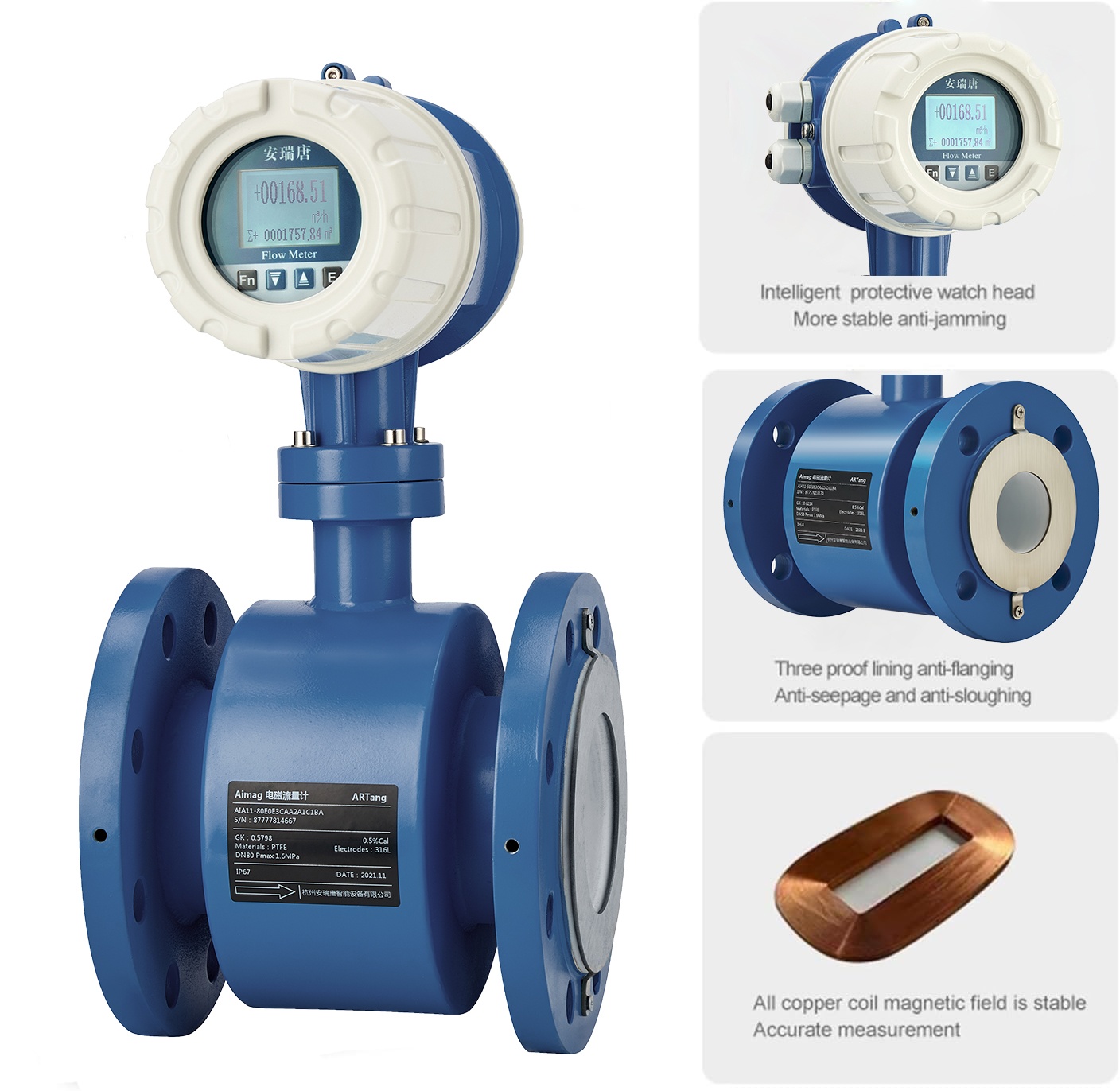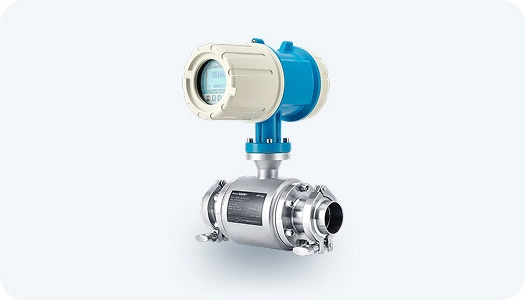-
Date:2025-11-11
-
Page View:12
Electromagnetic meter is one of the most commonly used medium measuring instruments in industrial production. Through electromagnetic meter, we can measure the quality, flow rate and other data of the medium to analyze whether the production process is normal. In industrial environment, electromagnetic meter is generally used for measuring some corrosive media, so it needs to be regularly maintained during use to ensure its normal operation.
Before an electromagnetic meter is put into operation, its zero point must be adjusted after powering on, while the electromagnetic flow sensor is completely filled with liquid and in a static (no-flow) state. After commissioning, zero-point checks should also be performed regularly based on operating conditions. This is especially important for applications involving sediment, easily contaminated electrodes, or non-clean liquids containing solid phases. During early operation, more frequent checks should be performed to gain experience and determine an appropriate routine inspection interval.
Electromagnetic meters using AC excitation are more prone to zero-point drift compared with those using rectangular-wave excitation, so even more attention should be paid to zero-point inspection and adjustment in these cases.

electromagnetic meter

magflow flow meter
Proper Use
1. Installation Standards Are Essential
Installation environment: Keep the meter away from strong magnetic fields (e.g., high-power motors or transformers) and vibration sources. Avoid direct sunlight and high-temperature conditions (operating temperature should follow the device manual, typically -20°C to 60°C) to prevent magnetic interference and equipment aging.
Pipeline requirements: Maintain sufficient straight pipe sections upstream and downstream of the flowmeter (typically ≥5 pipe diameters upstream and ≥3 pipe diameters downstream) to ensure smooth fluid flow. The meter should always be fully filled with liquid—avoid partially filled or empty pipes (install a vent valve or use a model with empty-pipe detection if necessary) to prevent measurement errors.
Electrode orientation: For horizontal installation, electrodes should be level (avoid pointing straight down to prevent deposits from covering them). For vertical installation, the fluid should flow from bottom to top, allowing gravity to remove air bubbles.
2. Key Operational Points
Start-up and shutdown: When starting, open the downstream valve first, then slowly open the upstream valve. When shutting down, close the upstream valve first, then the downstream valve. This prevents sudden fluid surges from impacting the sensor.
Parameter settings: Set the instrument parameters accurately according to the fluid’s conductivity (must be ≥5 μS/cm, e.g., tap water, acidic or alkaline solutions; not suitable for pure oil or gas), pipe diameter, and flow range. Incorrect settings that do not match actual operating conditions can cause measurement deviations.
Routine Maintenance
1. Regular Inspections (Recommended Daily or Weekly)
Visual inspection: Check the sensor and converter housing for damage. Inspect wiring terminals for looseness or corrosion, and examine cables for aging or damage.
Operating condition monitoring: Observe the flow, current, voltage, and other readings displayed on the converter to ensure stability. Watch for abnormal fluctuations, such as sudden spikes or drops in flow or no display at all. Listen for unusual noises in the pipeline, which may indicate blockages or air pockets.
2. Periodic Maintenance (Recommended Every 3–6 Months, Adjusted Based on Fluid Cleanliness)
Sensor cleaning: For fluids containing impurities or suspended solids (e.g., wastewater or slurry), remove and clean the inner walls of the sensor and electrodes to eliminate scale or deposits. Use a soft cloth with water or a neutral detergent; avoid scraping with hard objects to prevent damage to the sensing layer.
Grounding check: Ensure the grounding resistance of the sensor and pipeline is ≤10Ω (use separate grounding; avoid sharing with power equipment) to prevent stray currents from interfering with measurements.
Calibration verification: Verify measurement accuracy using the comparison method (in series with a standard flowmeter) or by sending the meter to the factory for calibration. Accuracy should typically be within ±0.5%–±1.0%. If deviations exceed this range, adjust or repair the meter promptly.
The core of electromagnetic meter maintenance is “preventing interference, preventing blockage, and preventing aging.” This is achieved by ensuring proper installation and grounding to avoid external interference, performing regular cleaning to prevent internal blockages, and conducting periodic inspections and calibrations to maintain optimal performance.










